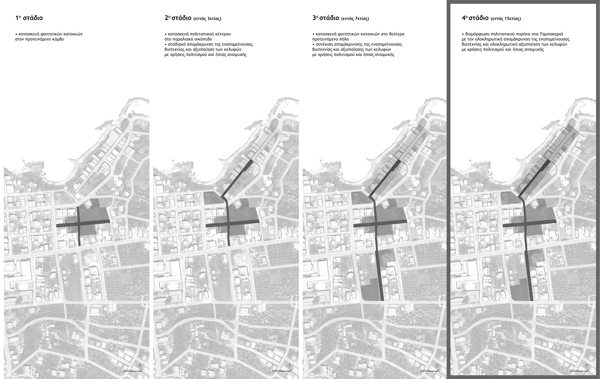STUDENTS PROJECTS
PROJECTS2015
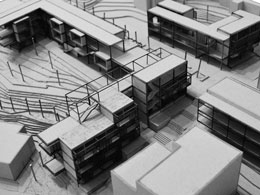
20 April, 2016
From the individual to the collective
Designing student housing in Chania.
Collaborators: Ioanna Bourouni , Olga Vougioukalaki
Supervisors: Valentini Karvountzi, Rena Klabatsea
Consultant: Costas Karadimas
National Technical University of Athens School of Architecture
Presented: 27th March 2015
A major issue being faced by the city of Chania is that of student housing. Our proposal is the creation of residences, to meet the housing needs of the students emphasizing on the collectivity. We also aim to enhance the connection of the university with the city, placing the residences within the urban fabric and linking them with cultural poles.
More and more students of the Technical University of Crete are forced to abandon their studies, unable to stay in a place with high cost of living, away from their place of origin. The dormitory of the university can accommodate only 78 students, less than the 1/3 of the rightful beneficiaries yearly.
Our proposal is the creation of residences in order to meet the housing needs of undergraduate and postgraduate students. Our goal is to enhance the connection of the university with the city, placing the residences within the urban fabric and linking them with cultural poles, while introducing the concept of collectivity, which we consider important because of its inextricable link with education.
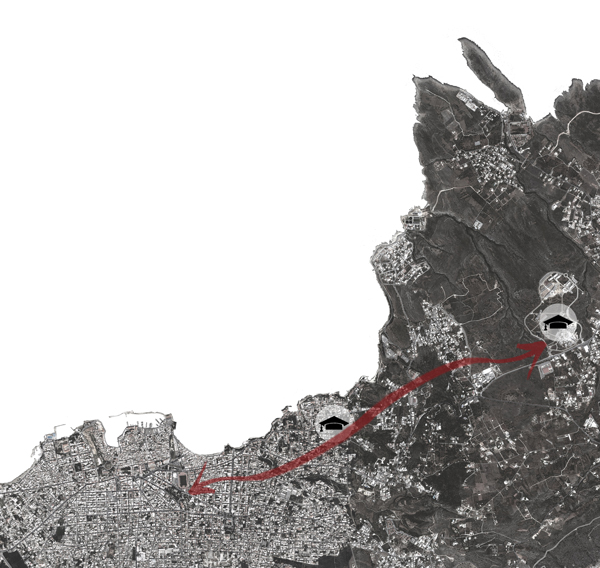
connection of the TUC with the city
For the placement of these residences the area of Halepa was selected after investigation. This is an area in the outskirts of the urban center of Chania, close to its central uses, at the imaginary crossroad of roads and public transport linking the center of the city to the campus.
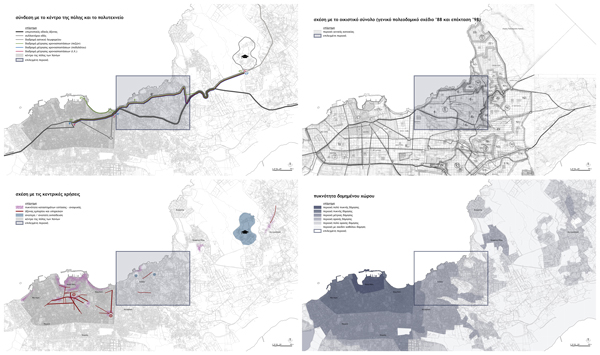
criteria for the selection of the study area
Based on a series of criteria, seven plots were selected, where the student residences and other infrastructure for young people will be placed. In this thesis we studied four of them. Basic intentions were to create two poles of student residences on either sides of a commercial road, so as to correlate with the other uses of the area beyond the pure dwelling. Additionally, wanting to capitalize on the Tabakaria area (former tanneries) we seek to create a cultural pole, reinforcing the existing character. The aim is its blending with the residential poles, but also with the wider region.
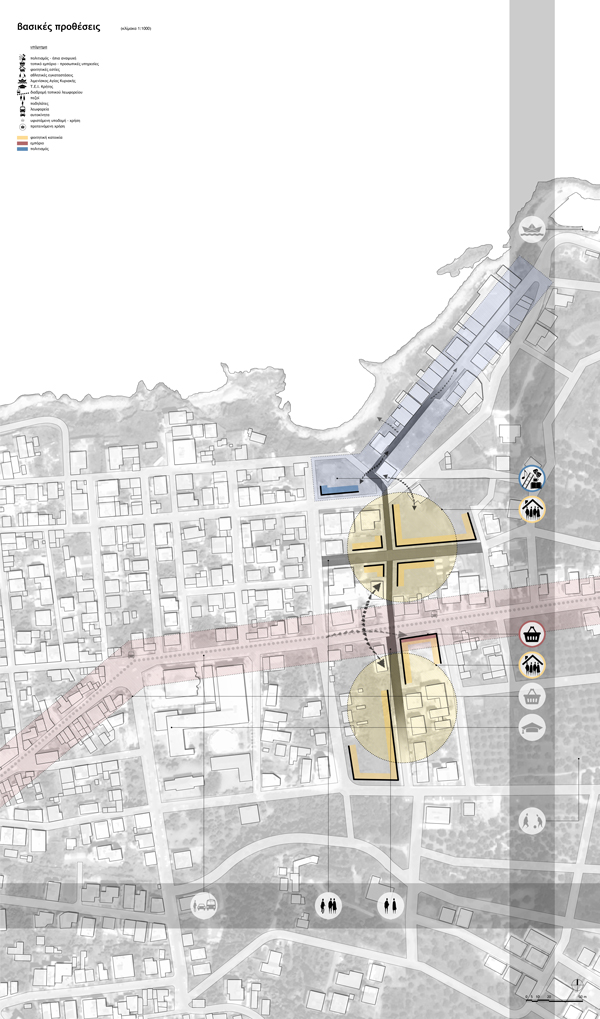
main strategy (masterplan)
The design emerged after studying domestic and international student housing examples, having personal experience staying at dormitories and conducting questionnaires to TUC students. It was important for us to investigate the dipoles and relationships developed in the region through the creation of student residences: university - city, private - public, individual - collective, temporary residents (students) - permanent residents (locals), young - old. In this way, eventually we formed the building program for housing the needs of 76 undergraduate and 21 postgraduate students.
The key design principle was the escalation of collectivity. On the street level, which is the most public - collective part, addressed to all local residents, belong the interior spaces intended for use by all students and the youth of Halepa. Then we have the common areas of each module housing, referred to the students - tenants of each module (10-12 people). Finally, we have more private areas: the student rooms.
In the design were taken also into account the outdoor areas, which are connected horizontally and vertically (courtyards and terraces), and the orientation and sightings, with the placement of the collective spaces in such a way as to have a view of the sea and central outdoor spaces.
Other important design and synthetic principles were maintaining the building line and the natural inclination of the field for the smooth integration of the buildings into the urban and natural environment, the creation of public paths, the organization of the individual modules into zones, keeping in mind bioclimatic criteria.
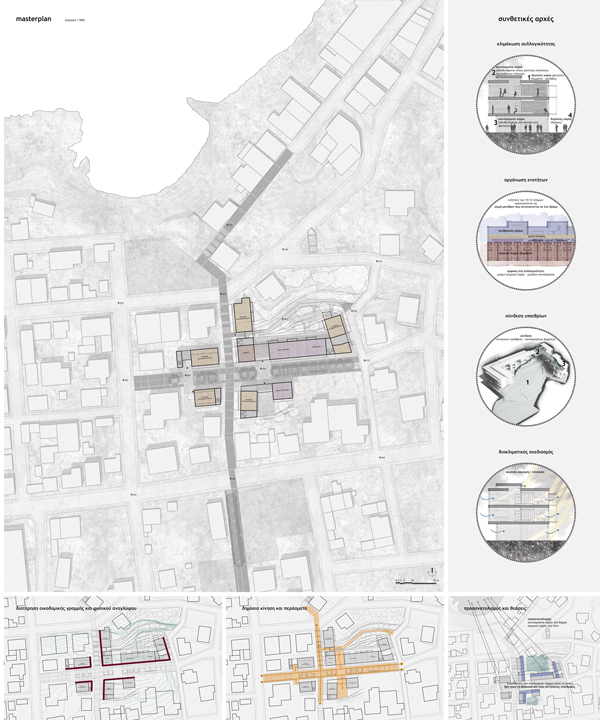
design principles
The residences were formed as a student neighborhood in a node, divided conceptually into two sections: the east section of undergraduates and the west section of postgraduates. Each section is designed differently referring to the needs of each category of students, differences resulting mainly from the degree of balance between collectivity and privacy. This is evident in the plans of the buildings, where an emphasis is given on collective spaces regarding the undergraduate buildings, and private spaces regarding the postgraduate buildings.
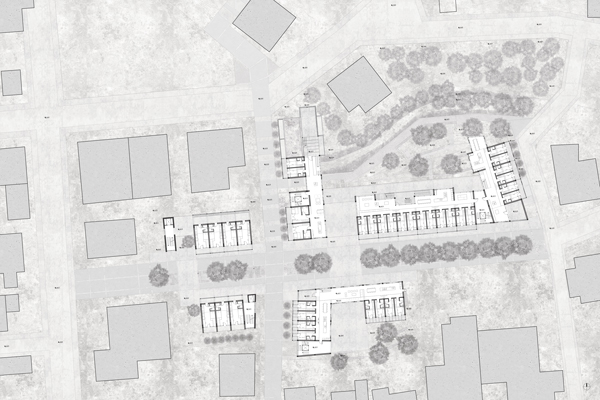
floor plan - building complex
The differentiation of the two modules is evident also in the outer shell of the buildings. Postgraduate students are sheltered in concrete buildings that look more like urban residential buildings. The buildings of undergraduate students are made, instead, of metal and concrete, in an attempt to differentiate from the city and be marked as something separate from the houses of the region, as a collective habitation area, integrated though in the scale of the city, autonomous and directly related to it.
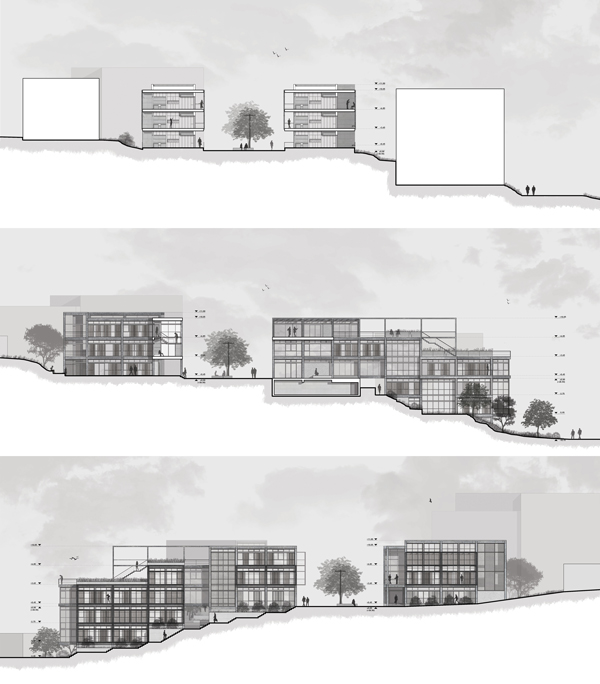
sections - building complex
The mixed construction facilitates a greater height in the common areas of the ground floor, considering the limitation of 11 meters permissible overall height. Light materials (cementboard, plasterboard, glass) were used for the secondary elements and the walls. The building elements and most infrastructure remained uncovered.
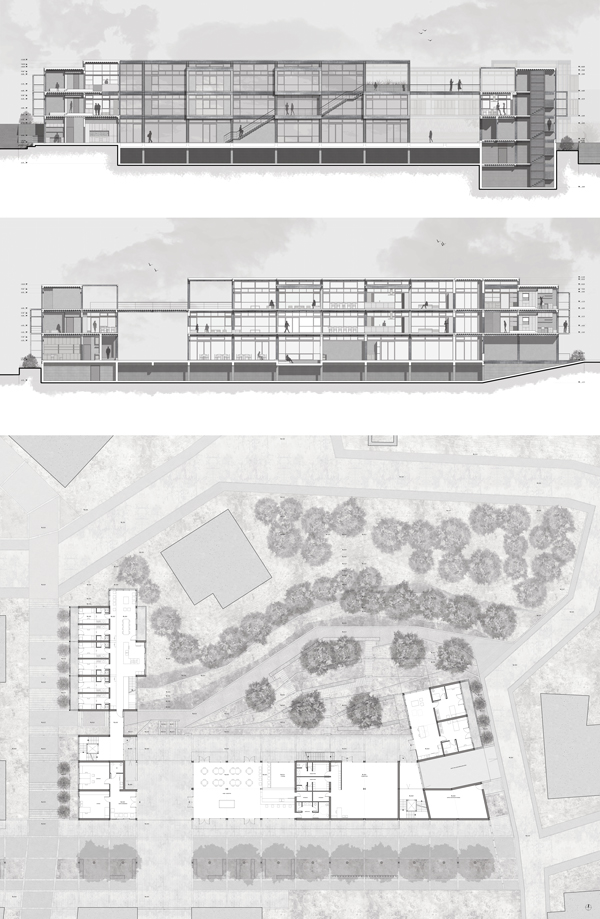
ground floor plan, sections - building for undergraduate students
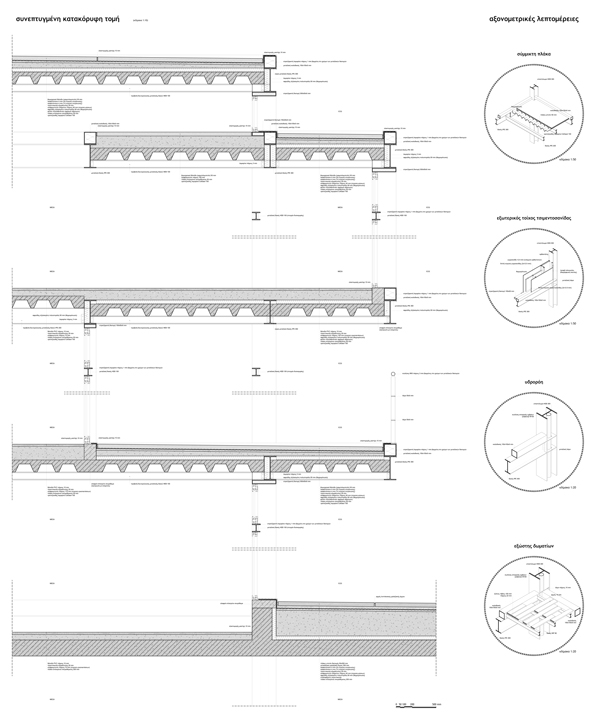
constructional details
For the entire project a four-step implementation timetable was arranged. The time for the completion of these stages was estimated, as it cannot be defined precisely, since it depends on multiple factors (economical, social, political).
At a later stage, this methodology could be applied and adapted in other parts of Chania. Thus, a better connection and relationship of the University with the city will be achieved, creating a network of student habitation nuclei within the urban fabric.
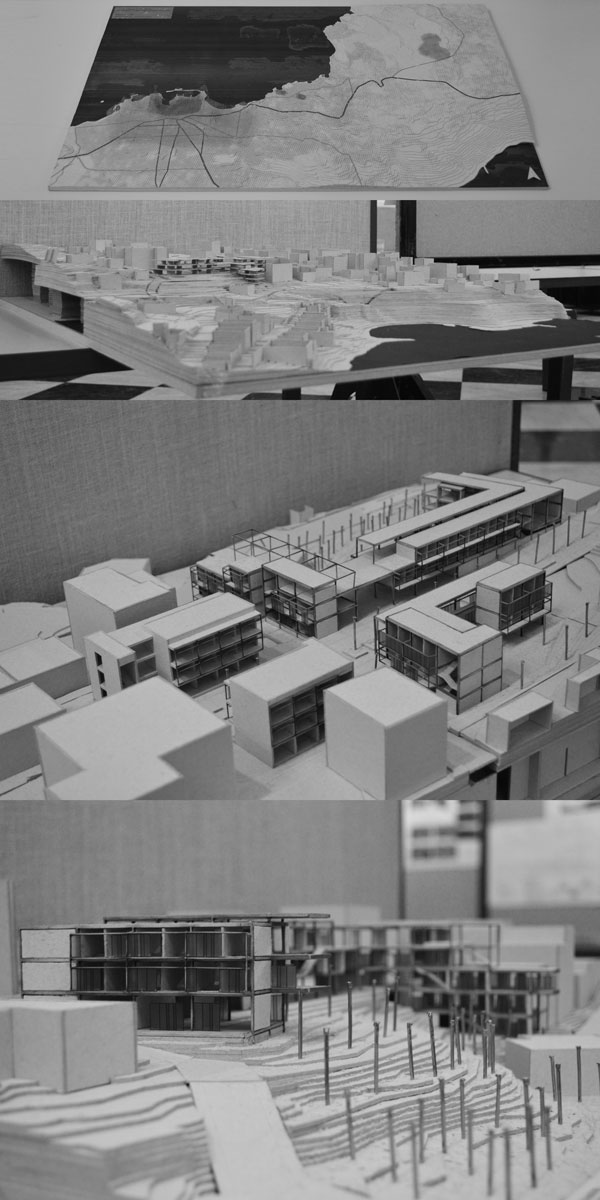
model photos
